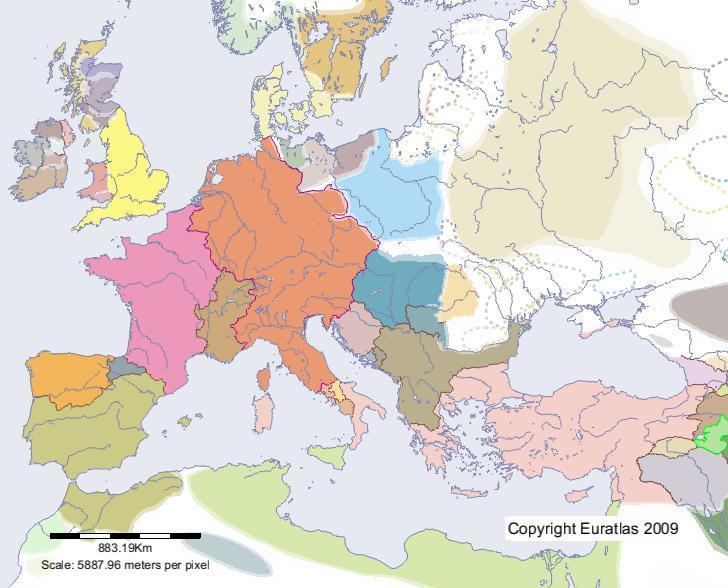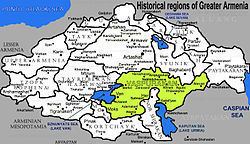 | ||
Serjo vaspurakan
Vaspurakan (also transliterated as Vasbouragan in Western Armenian; Armenian: Վասպուրական, (Vaspourakan) meaning the "noble land" or "land of princes") was the eighth province of Greater Armenia, which later became an independent kingdom during the Middle Ages, centered on Lake Van. Located in what is now called southeastern Turkey and northwestern Iran, the region is considered to be the cradle of Armenian civilization.
Contents
- Serjo vaspurakan
- Taltala vaspurakan dance group
- History
- Cantons
- Sites of Interest
- Notable People from Vaspurakan
- Gallery
- References

Taltala vaspurakan dance group
History

From the 9th century BC, Vaspurakan was part of Urartu. In the 6th century BC, it became part of Satrapy of Armenia. From 189 BC, it became one of Greater Armenia's provinces. Then it became part of Arsacid Dynasty of Armenia. After the division of 387, it was included into Persian Armenia. In the 8th century, it fell under Arab control. Many rebellions took place in Vaspurakan. In 885, within the territory of Kingdom of Armenia, it became free.

During most of its history, it was ruled by the Ardzruni dynasty, which first managed to create a principality in the area. At its greatest extent Vaspurakan comprised the lands between Lake Van and Lake Urmia (also known as Kaputan) in 908. In 908 Gagik I of Vaspurakan was recognized King of Armenia by the Abbasid Caliph in competition to the Bagratids, but soon he was reconciled with Ashot II, who recognized him as the King of Vaspurakan. In 1021, Seneqerim Ardzruni gave Vaspurakan to the Byzantine Empire, receiving estates in Sebasteia and surroundings in exchange.

After Vaspurakan was ceded to the Byzantine Empire, it was conquered by Seljuq Turks. Later it was ruled by Ahlatshahs, Ayyubids and Sultanate of Rum successively. In the beginning of the 13th century, part of Vaspurakan was liberated by the Zakarids, but was then conquered by the Mongols, Seljuks, Kara Koyunlu, Kara Koyunlu, Iranian Safavids, and then by the Ottoman Turks (though Nader Shah regained it during his short lived Afsharid dynasty). Notable is the defense of Van of 1915 during the Armenian Genocide.
Cantons

Vapusrakan's territory was 40,870 km2 (16,000 sq mi) and was divided into 35 cantons. They usually took the name of the local nakharar (canton chief) that ruled them:
Sites of Interest

